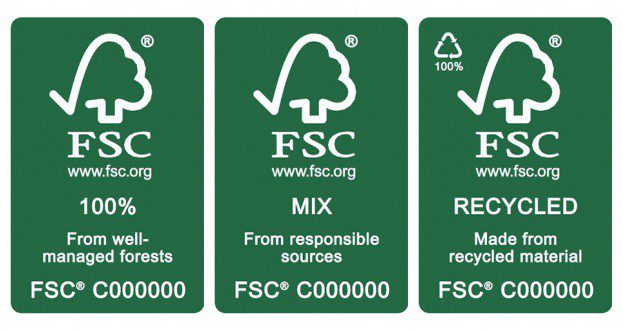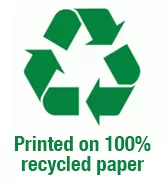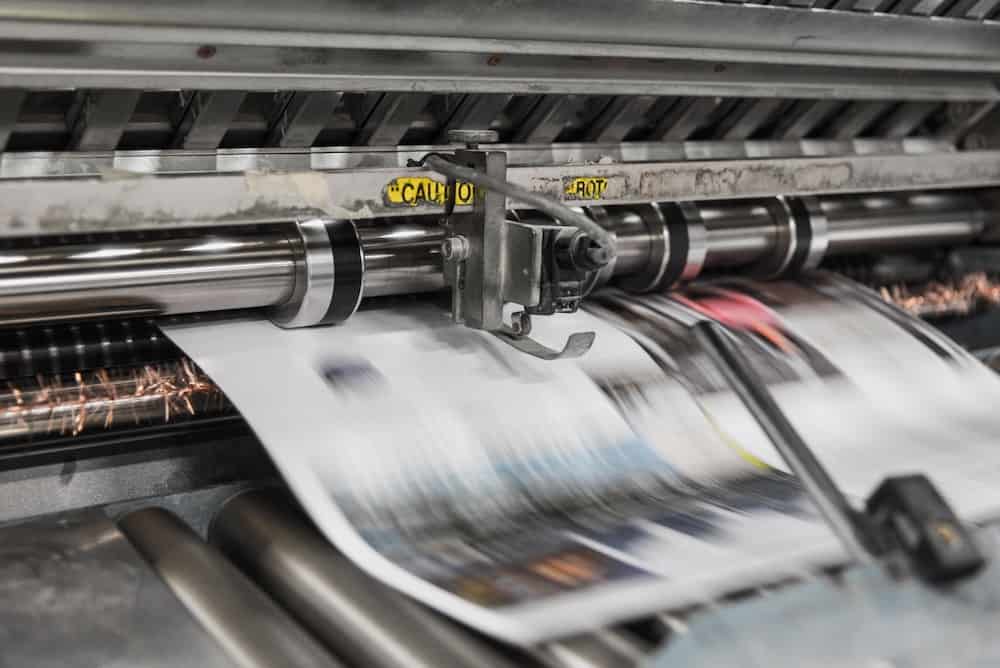
Both digital and print media have their respective carbon footprints. In the past, Print production and the Print Industry have been a bit of a whipping boy when it comes to being harmful to the environment. But not is all as it seems….Sustainable Print is a lot better for the planet than Digital is!
Print Media: Carbon Footprint
Printing services were known in the past for being energy-intensive and responsible for a lot of emissions. This is because the processes used in printing (such as paper production, bleaching, etc.) require significant amounts of energy and emit harmful pollutants into the atmosphere.
Nowadays, The Printing Industry accounts for only 1% of all carbon emissions, and the majority of this can be attributed to paper production.
Sustainable Printing companies to switch from traditional methods of printing with oil-based inks to eco-friendly water-based ink. This has reduced their emissions drastically.
The good news is that the carbon footprint of print media can and has been significantly reduced through careful and conscious choices.
Paper. It’s not what is used to be.

We’ve all had emails that stated at the bottom “Please consider the environment before printing this email” or ” Please think before you print” but paper has come a long way in the past few years and is now more sustainable than ever. .
Did you know the Paper Industry plants 3 times more trees than it uses? It takes 24 trees to produce 1 tonne of newspaper, but the industry plants 300 million trees every year in the US alone.
Sustainable Printing is tightly Eco-Regulated. Digital is not.

The Fibre Sustainability Index is a tool used by The Paper Industry to determine how sustainable the production and use of paper. This index includes factors such as resources used, waste management and climate impact.
The European Union (EU) has also set up policy and regulations to ensure that paper production is as sustainable as possible, promoting and authorising alternative fibre papers
This includes directives such as the promotion of recycling and waste prevention, reduction of greenhouse gas emissions, protection of nature and biodiversity, etc.
Its heavily regulated and policed so we know its right. Digital unfortunately doesnt have the same strict measuring stick
What is FSC Paper ?

FSC, an abbreviation for Forest Stewardship Council, is an independent, non-profit organization that sets standards for responsible forest management worldwide.
Their certification guarantees that the paper product you’re using comes from responsibly managed forests that provide environmental, social, and economic benefits.
The FSC label ensures that the trees harvested are replaced or allowed to regenerate naturally. This sustainable printing practice significantly reduces the carbon emissions associated with paper production, shifting the balance favourably for print media. And almost all paper stocks sold in the world are now
100% Recycled Paper

This paper is made entirely out of post-consumer waste. It has been recycled at least once, and often several times more.
The production process for recycled paper uses significantly less energy than that needed to produce new paper from wood pulp, so the carbon footprint of this type of post-consumer print media is much smaller than its non-recycled counterpart.
In terms of energy, even the most efficient digital media still require more energy than print.
While it is true that printing may require additional energy for drying and curing the inks, paper production and transportation are also energy intensive steps.
But when you compare both processes side by side, it is evident that overall, the carbon footprint of printed media is significantly smaller than its digital counterpart.
Other Sustainable Print Processes now are more Eco-Friendly
Additionally, using eco-friendly and environmental positive printing processes such as vegetable inks instead of traditional petroleum-based ones can help reduce toxic emissions during press production.
Opting for green printing services such as those offered by eco-friendly companies can help reduce the environmental impact of printing.
Digital Media: Carbon Footprint

Surprisingly, digital media production often has a higher carbon footprint than its printed counterpart.
Every Day the amount of Digital Usage is staggering. There is so much power being used to run the servers, routers, and posts of digital media that it is difficult to measure how much energy is truly being used.
Every Day there are 500 million tweets, 4 billion YouTube views, and more than 695 million emails sent. That’s a lot of energy being used!
Take Facebook, with approximately 2.8 billion monthly active users, each spending an average of 2.5 hours on the platform daily. An estimated 350 million photos are uploaded every day, and each of these digital actions requires energy.
Greenpeace’s Click Clean Report in 2017 indicated that Facebook’s data centres produced more than 718,000 metric tons of CO2e. So, while the act of posting on Facebook might seem virtually harmless, the cumulative carbon footprint is immense.
But that’s not the only issue with digital media. The components needed to produce digital media are often made of hazardous materials like cadmium, lead, and mercury, making them difficult – if not impossible – to recycle.
Additionally, the manufacturing process for digital devices such as computers requires the use of precious metals and toxic chemicals, which can have a detrimental effect on the environment.
Digital Hardware Issues
Furthermore, digital media is often viewed as a disposable form of communication.
Consumers tend to buy new digital devices every few years to keep up with the latest and greatest trends, while printers are designed with longevity in mind. This cycle of buying and discarding devices adds to the digital media’s overall carbon footprint and the level of its environmental impacts.
Furthermore, many of the energy sources used in powering data centres are non-renewable. This means that emissions from these activities will continue to increase over time as more data centres and servers are built.
The Bottom Line: Carbon Footprint of Sustainable Printing and Digital Media

Overall, print has a smaller carbon footprint than digital.
Overall, currently Digital consumes roughly 2% of the world’s energy supply. This is predicted to go up to 8% by 2040. The trend is clear, digital’s carbon footprint is rising rapidly and will continue to grow for years to come.
Print media on the other hand has a much smaller environmental impact than digital.
This is because print does not require as much energy or materials for production, and it often lasts longer than its digital counterpart. Additionally, paper-based products are more likely to be recycled and reused while digital media is often discarded after a few years of use.
For those looking to reduce their overall environmental impact, switching from digital to print can be a great way to do so.
Switching to Sustainable Print: Marketing Benefits for Businesses

In addition to reducing the environmental impact of their operations, businesses can also benefit from switching to print.
For one thing, printed materials are often more cost-effective than digital materials when it comes to production and distribution.
Additionally, printed materials can be used to reach a wider audience and increase brand recognition.
Finally, printed materials tend to have higher readability rates than digital media, making them more likely to be effective in communicating a message or promoting a product or service.
Consider your options !
Switching to printed materials can have numerous benefits for businesses both financially and environmentally.
Not only can printing help to reduce the carbon footprint of a company’s operations, but it can also be a cost-effective and efficient way of reaching potential customers and clients.
Finally, the use of sustainable design materials and technologies is becoming increasingly important in the printing industry, with companies now investing in eco-friendly solutions that reduce energy consumption and emissions.
With these considerations taken into account, businesses should make sure to consider their options when it comes to choosing print materials (especially longevity items that are used recurringly such as Books, or Brochures) for their marketing or promotional needs.







